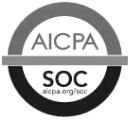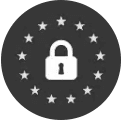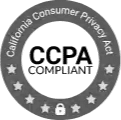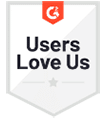Designing an Effective Sales Enablement Training Program: Key Components and Strategies

Table of Contents
A sales enablement training program can be the key to a motivated, knowledgeable sales force that’s hitting its quotas and driving positive revenue. With the right leadership support and a reasonable budget, every company can plan and carry out an effective sales enablement program that inspires employees and improves your bottom line.
In this article, we’ll discuss the potential impact of good sales enablement training, and share some best practices and top strategies for successful sales enablement training programs.
What is sales enablement training?
Sales enablement training is a program that equips sales teams with the knowledge, skills, tools, and resources to sell effectively – in short, it gives them everything they need to hit sales quotas.
Really great sales enablement training programs inspire salespeople to smash sales targets, while also giving them all the capabilities they need to do so. They draw on all kinds of techniques to make the training more effective, including advanced technology and artificial intelligence, gamification, and more.

The benefits of creating a sales enablement training program
An effective sales enablement program brings many benefits. Here are some of the positive effects you can expect to see from sales enablement training.
More closed deals
Salespeople who thoroughly understand their solution’s value proposition, have the tools they need to respond to customer questions, and have strong selling skills are able to hold better sales conversations. They are also more confident on sales calls and talk more fluently, which helps build trust. Not surprisingly, better sales conversations translate into higher conversion rates and more closed deals.
Shorter onboarding times
An effective sales enablement program teaches your salespeople the best ways to sell your solution and gives them vital guidance for success. This means that they master product knowledge and learn how to adequately respond to customer objections in a shorter period of time. It also bolsters their confidence from the first call, which can be all that’s needed for a happy, engaged sales rep.
Tighter alignment with marketing
Sales enablement training ensures that your marketing materials, content, and campaigns are better aligned with sales processes and customer needs. The end result is improved coordination between sales and marketing, stronger lead generation, and a more cohesive customer experience.
More consistent messaging
Sales enablement training lets you deliver standardized training materials and messaging frameworks to all your sales reps. Everyone learns the same talking points, so they communicate consistently with all your prospects and customers, helping to build trust, enhance the company’s brand image, and ultimately drive more deals.
Higher customer satisfaction
Sales enablement training improves your sales teams’ selling skills and product knowledge, so your reps can understand customer needs and suggest more appropriate solutions that are customized to their pain points and issues. This translates into improved customer satisfaction, increased customer loyalty, and more repeat business.
Increased efficiency
Your sales enablement training equips sales reps with tools and resources that streamline their workflows, saving time and boosting efficiency. Sales teams learn to leverage technology, sales automation tools, and CRM systems, allowing them to spend more time engaging with customers and closing deals.
A more effective sales force
An effective sales enablement program can close the gap between A-players and middling sellers by strengthening selling skills for every sales rep. Even people who aren’t “naturals” can become top players when they have the right tools and training. This empowers sellers to close deals and meet their quota, and helps spread the load of closing deals more evenly across your sales teams.
The importance of a sales enablement program
Top sellers can make selling look effortless, but it’s not easy to conduct a good sales conversation, move prospects along the pipeline, and close deals. B2B buyers are short on time and patience, and reps can find it difficult to build a relationship in the few seconds they get before prospects hang up.
Many salespeople may not be sure about your solution’s value proposition or technical specifications. If they haven’t mastered what they are selling or why it’s beneficial, they are unlikely to be able to communicate this information to prospects. Reps selling complex products like advanced tech or insurance, or in sensitive verticals like health or finance, have a particular need to have all the information at their fingertips.
Last but not least, we’re entering a challenging period for sales. Inflation, ongoing economic turmoil, and the rising cost of living are making it harder than ever to close sales. Sellers need all the help, support, and tools they can get to drive sales to completion.
How do you succeed in sales enablement?
First and foremost, align training goals with your business goals. Next, set clearly-defined objectives for your program, including the specific knowledge, skills, and behaviors that you want sales reps to acquire. It’s a good idea to carry out a training needs assessment, so you know exactly where the skills gaps lie.
You also need to choose the right tools and tech for your purposes, and appoint employees with overall responsibility for sales enablement training. Otherwise, your program could fall between the cracks. If you don’t already have a sales enablement team, now is the time to appoint one.
Finally, set up a system to track and analyze your progress. Learn which approaches are the most effective and double down on them. Solid data will give you the insights you need to refine sales training programs for maximum impact.
What are the key components of an effective sales enablement training program?
Here are the non-negotiable components of a successful sales enablement training program.
The sales process
Your sellers need an awareness of the sales process, from prospecting and discovery to closing deals. Make sure that sales reps understand tasks like qualifying leads, objection handling, closing techniques, and post-sales follow-up.
Product knowledge
Teach sales reps all about the product or service they are selling. They should know how it works, what the benefits are, all the features, your competitive advantage, and the top use cases for your solution.
Sales tools
It’s not enough to provide sellers with sales tools. They also need to know how to use them effectively to gain customer insights, track the buyer journey, and increase their productivity. This includes CRM systems, sales automation software, customer communication tools, and any other platforms or applications used in the sales process.
Market knowledge
Educate sales teams about your competitors, market trends, and the broader economic context for your market. They also need to know about the demographics, preferences, and behaviors of your target audience, including their pain points and motivations, so they can conduct more meaningful conversations.
Selling skills
Storytelling, objection handling, negotiation, and building rapport are all skills that can be learned. Even weaker sellers can master how to craft compelling sales messages, customize their pitch, and respond to common objections according to each individual’s concerns.
A safe space to practice
It’s natural to make mistakes when you’re just beginning to hold sales conversations, but it’s also natural to feel embarrassed about them. Sales reps are more likely to participate in your sales training program if they can climb up the learning curve in private, without anyone judging their errors.
Evaluation and performance tracking
A successful sales enablement program measures each seller’s performance, and tracks key metrics to identify areas for improvement. This includes monitoring sales pipeline, conversion rates, revenue generated, and other relevant performance indicators. Collect data over time, so you can track each rep’s progress.
Strategies for designing an effective sales enablement program
Before you begin crafting your sales enablement training program, you need to understand certain critical strategies for success. For example, on-demand, bitesize sessions support onboarding and training in the flow of work. Sales reps can quickly refresh their memory or strengthen sales skills just before they jump on an important call. Bitesize learning also improves knowledge retention, since sellers can practice each new skill or review information before moving on.
It’s vital to design content that’s engaging and appealing as well as instructive. Your sales enablement training program is only effective if salespeople actually complete it. Interactive training experiences like videos, role-plays, sales call simulations, gamified challenges, quizzes, and more can motivate sales reps to do more practice and revision, which in turn refreshes their memory and strengthens their skills.
In a similar vein, build role playing and practice into your program. Most sales reps need time to master skills and knowledge. Role plays allow them to apply what they’ve learned in a safe environment, receive feedback, and refine their techniques.
Sales enablement training is an ongoing project, not a one-time event. Encourage continuous learning and development by offering articles, books, videos, and interactive role play practice. Tech tools, including learning management systems (LMS), knowledge-sharing platforms, CRM systems, sales automation, and data analytics can facilitate this and help you achieve all your goals.
Last but not least, establish key performance indicators (KPIs) and metrics to measure the effectiveness of your sales enablement training program. Regularly evaluate the impact of the program on sales performance, revenue generation, and customer satisfaction, and make improvements and adjustments as necessary.
Second Nature’s AI solution for a successful sales enablement program
Second Nature can help you follow best practices and achieve your goals in implementing an effective sales enablement program. The platform uses AI to deliver engaging, interactive role play sessions that strengthen selling skills and give sales reps the confidence to conduct successful sales conversations.
Conversational AI for sales provides a safe space where reps can practice sales conversations without judgment, and delivers objective scoring and feedback to help reps improve their capabilities and sales leadership to track progress among their sales force.
The solution delivers training for every sales situation, including discovery conversations, building trust, objection handling, price negotiations, and more. It can also serve as an LMS for your sales reps to find the knowledge they need about your product, value proposition, corporate messaging, market, audience, and more.
An effective sales enablement training program can be the foundation for sales success
Sales enablement training is crucial for helping sales reps to gain confidence, understand your solution, and close deals. With the right strategies, tools, and best practices, you can establish an effective sales enablement program that prepares all your sales reps to hit their quotas, and motivates them to excel at driving sales.
FAQs
How long does a sales enablement training program typically last?
Most sales enablement training programs continue for between a few weeks and a few months, depending on how complex your solution is, your target audience, and your goals for the training program. But ideally, a sales enablement training program should offer continuous, ongoing training, to refresh reps’ knowledge and skills and constantly improve their sales performance.
What topics are typically covered in a sales enablement training program?
Most sales enablement training programs cover:
Product knowledge
Sales processes
Sales technology training
Communication, listening, and presentation skills
Buyer persona and needs analysis
Competitive analysis and market analytics
Objection handling and negotiation
Who can benefit from a sales enablement training program?
Every salesperson can benefit from a sales enablement training program, whether they are star sellers or nearer the bottom of the pack, and regardless of how long they’ve been selling. Sales managers also benefit from better insights into seller strengths and weaknesses, and customer support teams can strengthen their ability to understand customer pain points and address customer complaints and queries.
Are sales enablement training programs customizable?
Definitely. In fact, you should customize your sales enablement training program according to your business goals and to make sure that it aligns with your sales strategies and company culture. Customization allows you to tailor the training content, delivery methods, and duration based on factors such as industry, products, target audience, and existing knowledge levels of the sales team.
We’re Hiring
We have positions available in our Tel-Aviv and New York offices and remote/hybrid.

 14 MIN. READING
14 MIN. READING


